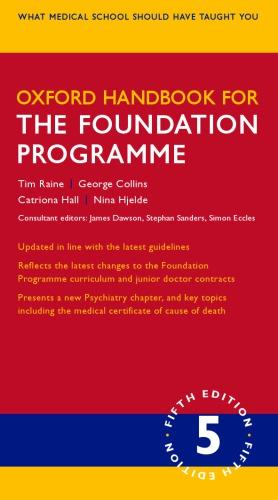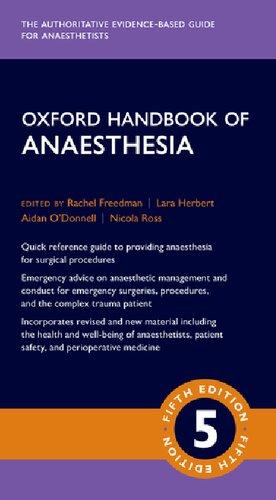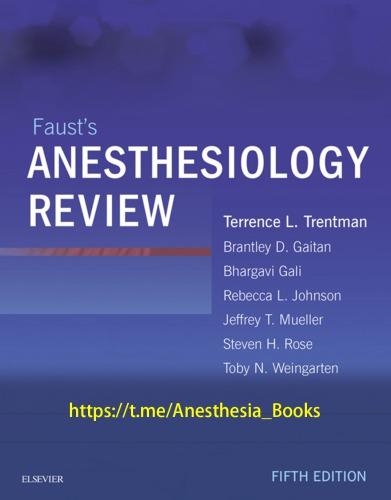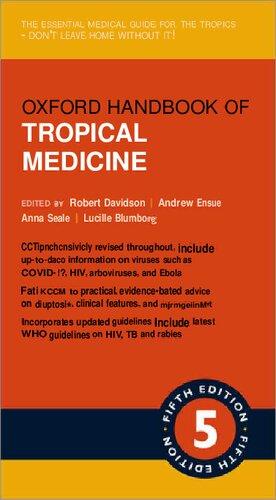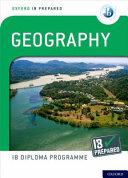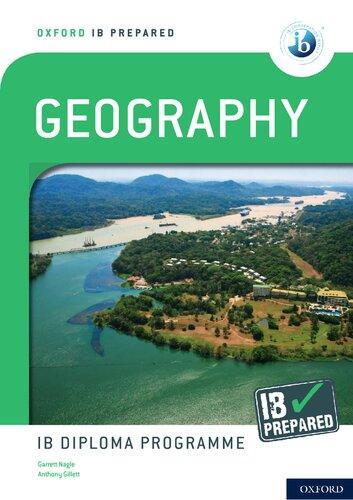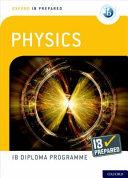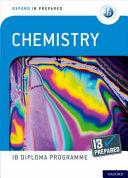Oxford Handbook for the Foundation Programme
Published and forthcoming Oxford Handbooks
Oxford Handbook for the Foundation Programme, 5e
Oxford Handbook of Acute Medicine, 3e
Oxford Handbook of Anaesthesia, 4e
Oxford Handbook of Applied Dental Sciences
Oxford Handbook of Cardiology, 2e
Oxford Handbook of Clinical and Healthcare Research
Oxford Handbook of Clinical and Laboratory Investigation, 3e
Oxford Handbook of Clinical Dentistry, 6e
Oxford Handbook of Clinical Diagnosis, 3e
Oxford Handbook of Clinical Examination and Practical Skills, 2e
Oxford Handbook of Clinical Haematology, 4e
Oxford Handbook of Clinical Immunology and Allergy, 3e
Oxford Handbook of Clinical Medicine – Mini Edition, 9e
Oxford Handbook of Clinical Medicine, 10e
Oxford Handbook of Clinical Pathology
Oxford Handbook of Clinical Pharmacy, 3e
Oxford Handbook of Clinical Rehabilitation, 2e
Oxford Handbook of Clinical Specialties, 10e
Oxford Handbook of Clinical Surgery, 4e
Oxford Handbook of Complementary Medicine
Oxford Handbook of Critical Care, 3e
Oxford Handbook of Dental Patient Care
Oxford Handbook of Dialysis, 4e
Oxford Handbook of Emergency Medicine, 4e
Oxford Handbook of Endocrinology and Diabetes, 3e
Oxford Handbook of ENT and Head and Neck Surgery, 2e
Oxford Handbook of Epidemiology for Clinicians
Oxford Handbook of Expedition and Wilderness Medicine, 2e
Oxford Handbook of Forensic Medicine
Oxford Handbook of Gastroenterology & Hepatology, 2e
Oxford Handbook of General Practice, 4e
Oxford Handbook of Genetics
Oxford Handbook of Genitourinary Medicine, HIV, and Sexual Health, 2e
Oxford Handbook of Geriatric Medicine, 3e
Oxford Handbook of Infectious Diseases and Microbiology, 2e
Oxford Handbook of Key Clinical Evidence, 2e
Oxford Handbook of Medical Dermatology, 2e
Oxford Handbook of Medical Imaging
Oxford Handbook of Medical Sciences, 2e
Oxford Handbook of Medical Statistics
Oxford Handbook of Neonatology, 2e
Oxford Handbook of Nephrology and Hypertension, 2e
Oxford Handbook of Neurology, 2e
Oxford Handbook of Nutrition and Dietetics, 2e
Oxford Handbook of Obstetrics and Gynaecology, 3e
Oxford Handbook of Occupational Health, 2e
Oxford Handbook of Oncology, 3e
Oxford Handbook of Operative Surgery, 3e
Oxford Handbook of Ophthalmology, 3e
Oxford Handbook of Oral and Maxillofacial Surgery
Oxford Handbook of Orthopaedics and Trauma
Oxford Handbook of Paediatrics, 2e
Oxford Handbook of Pain Management
Oxford Handbook of Palliative Care, 2e
Oxford Handbook of Practical Drug Therapy, 2e
Oxford Handbook of Pre-Hospital Care
Oxford Handbook of Psychiatry, 3e
Oxford Handbook of Public Health Practice, 3e
Oxford Handbook of Reproductive Medicine & Family Planning, 2e
Oxford Handbook of Respiratory Medicine, 3e
Oxford Handbook of Rheumatology, 3e
Oxford Handbook of Sport and Exercise Medicine, 2e
Handbook of Surgical Consent
Oxford Handbook of Tropical Medicine, 4e
Oxford Handbook of Urology, 3e
Symbols and abbreviations
K definition
I topics covered elsewhere E cross reference
T supplementary information
2 emergency
3 don’t dawdle
M website i increased d decreased l leading to
plus/minus > greater than
< less than
female
male
A+E accident and emergency
AAA abdominal aortic aneurysm
ABG arterial blood gas
ABPI ankle–brachial pressure index
ABx antibiotics
ACCS acute care common stem
ACEi angiotensin-converting enzyme inhibitor(s)
ACF academic clinical fellowship
ACR albumin:creatinine ratio
ACS acute coronary syndrome
ACTH adrenocorticotrophic hormone
ADH antidiuretic hormone
ADL activities of daily living
AED automated external defibrillator/anti-epileptic drug
AF atrial fibrillation
AFB acid-fast bacilli
αFP (AFP) α-fetoprotein
AIDS acquired immunodeficiency syndrome
AKI acute kidney injury
ALL acute lymphoblastic leukaemia
ALP alkaline phosphatase
ALS Advanced Life Support®
ALT alanine aminotransferase
AML acute myeloid leukaemia
AMPH approved mental health professional
AMPLE Allergies; Medications; Past medical history; Last meal; Events leading to presentation
ANA antinuclear antibody
ANCA antineutrophil cytoplasmic antibody
AoMRC Academy of Medical Royal Colleges
AP anteroposterior
APH antepartum haemorrhage
APLS Advanced Paediatric Life Support
APTT activated partial thromboplastin time
AR aortic regurgitation
ARB angiotensin receptor blocker
ARDS acute respiratory distress syndrome
ARVC arrhythmogenic right ventricular cardiomyopathy
AS aortic stenosis
ASA American Society of Anesthesiologists
ASAP as soon as possible
ASD atrial septal defect
AST aspartate transaminase
AT angiotensin
ATLS Advanced Trauma Life Support
ATN acute tubular necrosis
AV atrioventricular
AVN atrioventricular node
AVR aortic valve replacement
AXR abdominal X-ray
Ba barium
BAL bronchoalveolar lavage
BBB bundle branch block
BCG bacille Calmette–Guérin (TB vaccination)
bd bis die (twice daily)
BE base excess
β-hCG β-human chorionic gonadotrophin
BIH benign intracranial hypertension
BiPAP biphasic positive airways pressure
BKA below knee amputation
BLS Basic Life Support
BM Boehringer Mannheim meter (capillary blood glucose) or bone marrow
BMA British Medical Association
BMI body mass index
BNF British National Formulary
BNP brain natriuretic peptide
BP blood pressure
BPH benign prostatic hypertrophy
BX biopsy
C+S culture and sensitivity
Ca carcinoma
Ca2+ calcium
CABG coronary artery bypass graft
CAD coronary artery disease
CAH congenital adrenal hyperplasia
CAPD continuous ambulatory peritoneal dialysis
CBD case-based discussion/common bile duct
CBG capillary blood glucose
CBT cognitive behavioural therapy
CCF congestive cardiac failure
CCG clinical commissioning group
CCT Certificate of Completion of Training
CCU coronary care unit
CD controlled drug
CDT Clostridium difficile toxin
CEA carcinoembryonic antigen
CEPOD Confidential Enquiry into Perioperative Deaths
CEX Clinical Evaluation Exercise
cf compared with
CHD coronary heart disease
CI contraindication
CJD Creutzfeldt–Jakob disease
CK creatine kinase
CK-MB heart-specific creatine kinase (MB-isoenzyme)
CKD chronic kidney disease
CLL chronic lymphocytic leukaemia
CLO Campylobacter-like organism
CML chronic myeloid leukaemia
CMV cytomegalovirus
CNS central nervous system
CO carbon monoxide
CO2 carbon dioxide
COAD chronic obstructive airway disease
COC combined oral contraceptive
COPD chronic obstructive pulmonary disease
CPAP continuous positive airway pressure
CPK creatine phosphokinase
CPN community psychiatric nurse
CPR cardiopulmonary resuscitation
CQC care quality commission
CRP C-reactive protein
CRT capillary-refill time/cardiac resynchronization therapy
CSF cerebrospinal fluid
CSU catheter specimen of urine
CT computed tomography/Core Training/Core Trainee
CTCA CT coronary angiogram
CTG cardiotocograph
CTPA CT pulmonary angiogram
CVA cerebrovascular accident
CVP central venous pressure
CVS cardiovascular system
CXR chest X-ray
d day(s)
D+C dilatation and curettage
D+V diarrhoea and vomiting
DBS Disclosure and Barring Service
DC direct current
DCCV direct current cardioversion
DCM dilated cardiomyopathy
DEXA dual-energy X-ray absorptiometry (DXA)
DH drug history/Department of Health
DHS dynamic hip screw
DI diabetes insipidus
DIB difficulty in breathing
DIC disseminated intravascular coagulation
DIPJ distal interphalangeal joint
DKA diabetic ketoacidosis
DLB dementia with Lewy bodies
DM diabetes mellitus
DMARD disease-modifying anti-rheumatic drug
DNA deoxyribonucleic acid/did not attend
DNAR do not attempt resuscitation
DOAC direct oral anticoagulant
DoB date of birth
DOPS Direct Observation of Procedural Skills
DRE digital rectal examination
DSM-5 Diagnostic and Statistical Manual of Mental Disorders 5th edition
DTP diphtheria, tetanus, and pertussis
DU duodenal ulcer
DVLA Driver and Vehicle Licensing Agency
DVT deep vein thrombosis
d/w discuss(ed) with
Dx diagnosis
EBM evidence-based medicine
EBV Epstein–Barr virus
ECG electrocardiogram
Echo echocardiogram
ECV external cephalic version
ED emergency department (formerly A+E)
EDD expected due date (pregnancy)
EEG electroencephalogram
EMD electromechanical dissociation or pulseless electrical activity (PEA)
EMG electromyogram
ENP emergency nurse practitioner
ENT ear, nose, and throat
EO eosinophil
EPO erythropoietin
ERCP endoscopic retrograde cholangiopancreatography
ERPC evacuation of retained products of conception
ESM ejection systolic murmur
ESR erythrocyte sedimentation rate
ESRF end-stage renal failure
ET endotracheal
EtOH ethanol (alcohol)
ETT endotracheal tube
EUA examination under anaesthetic
EVD extra-ventricular drain
EWTD European Working Time Directive
F1/F2 Foundation year one/two
FAST focused assessment with sonography in trauma
FB foreign body
FBC fullblood count
FDP fibrindegradationproduct
FEV1 forcedexpiratoryvolumeinone second
FFP freshfrozen plasma
FH familyhistory/foetal heart
FiO2 fractionof inspired oxygen
FNA fineneedleaspiration
FOB faecaloccult blood
FOOSH fallonoutstretched hand
FP FoundationProgramme
FPP flexiblepay premia
FRC functionalresidualcapacity
FSH folliclestimulatinghormone
FTSTA fixed-termspecialtytrainingappointment
FVC forcedvitalcapacity
G+S groupand save
G6PD glucose-6-phosphatedehydrogenase
GA generalanaesthetic
GB gallbladder
GBS GroupB Streptococcus/Guillain–Barrésyndrome
GCS GlasgowComa Scale
GFR glomerularfiltration rate
γGT(GGT) gamma-glutamyltranspeptidase
GH growthhormone/gynaehistory
GI gastrointestinal
GMC GeneralMedicalCouncil
GN glomerulonephritis
GORD gastro-oesophagealrefluxdisease
GOSWH guardianof safeworking hours
GP generalpractitioner
GTN glyceryltrinitrate
GTT glucosetolerance test
GU(M) genitourinary(medicine)
h hour(s)
h@N hospitalat night
HAART highlyactiveantiretroviraltherapy
HAI hospital-acquiredinfection
HAV hepatitisA virus
Hb haemoglobin
HbA1c glycosylatedhaemoglobin
HBV hepatitisB virus
HCA healthcare assistant
HCC hepatocellular carcinoma
hCG human chorionic gonadotrophin
HCM hypertrophic cardiomyopathy
HCSA Hospital Consultants and Specialists Association
HCT haematocrit
HCV hepatitis C virus
HDL high-density lipoprotein
HDU high dependency unit
HEE Health Education England
HELLP haemolysis, elevated liver enzymes, low platelets (syndrome)
HHS hyperglycaemic hyperosmolar state
HIV human immunodeficiency virus
HLA human leucocyte antigen
HMMA 4-hydroxy-3-methoxymandelic acid (phaeochromocytoma)
HOCM hypertrophic obstructive cardiomyopathy
HONK hyperosmolar non-ketotic state
HPA Health Protection Agency
HPC history of presenting complaint
HR heart rate/human resources
HRCT high-resolution computed tomography scan
HRT hormone replacement therapy
HSP Henoch–Schönlein purpura
HSV herpes simplex virus
HTN hypertension
HUS haemolytic uraemic syndrome
HVS high vaginal swab
I+D incision and drainage
IBD inflammatory bowel disease
IBS irritable bowel syndrome
ICD implantable cardiac defibrillator
ICD-10 International Classification of Diseases 10th revision
ICP intracranial pressure
ICS inhaled corticosteroid
ICU intensive care unit
ID identification/infectious diseases
IE infective endocarditis
IFG impaired fasting glucose
Ig immunoglobulin
IGT impaired glucose tolerance
IHD ischaemic heart disease
ILS Immediate Life Support
IM intramuscular
Imp impression (clinical)
IN intranasal
INH by inhalation
INR international normalized ratio
ITP idiopathic thrombocytopenic purpura
ITU intensive care unit/intensive therapy unit
IU international unit
IUCD intrauterine contraceptive device
IUP intrauterine pregnancy
IV intravenous
IVDU intravenous drug user
IVI intravenous infusion
IVP intravenous pyelogram
IVU intravenous urogram
Ix investigation(s)
JDC Junior Doctors’ Committee of BMA
JVP jugular venous pressure
K-nail Küntscher nail
kPa kilopascal
KUB kidneys, ureter, bladder (X-ray)
K-wire Kirschner wire
L litre(s)
LA local anaesthetic/left atrium
LABA long-acting β-agonist
LACS lacunar circulation stroke
LAD left axis deviation/left anterior descending
LAMA long acting muscarinic agonist
LBBB left bundle branch block
LDH lactate dehydrogenase
LDL low-density lipoprotein
LETB Local Education and Training Board
LFT liver function test
LH luteinizing hormone
LHRH luteinizing hormone releasing hormone
LIF left iliac fossa
LMA laryngeal mask airway
LMN lower motor neuron
LMP last menstrual period
LMWH low-molecular-weight heparin
LN lymph node
LØ lymphocyte
LOC loss of consciousness
LP lumbar puncture
LRTI lower respiratory tract infection
LSCS lower segment Caesarean section
LTFT less than full-time training
LTOT long-term oxygen therapy
LUQ left upper quadrant
LVEF left ventricular ejection fraction
LVF left ventricular failure/left ventricular function
LVH left ventricular hypertrophy
MAOI monoamine oxidase inhibitor
mane in the morning
MAP mean arterial pressure
M,C+S microscopy, culture, and sensitivity
MCPJ metacarpal phalangeal joint
MCV mean cell volume
MDR multi-drug resistant
MDT multidisciplinary team
MDU Medical Defence Union
ME myalgic encephalitis
MEWS Modified Early Warning Score
mg milligram(s)
MI myocardial infarction
min minute(s)
mL millilitre(s)
MMC Modernising Medical Careers
mmH2O millimetres of water
mmHg millimetres of mercury
MMR measles, mumps, and rubella
MMSE Mini-mental State Examination
MND motor neuron disease
MPS Medical Protection Society
MR mitral regurgitation/modified release/magnetic resonance
MRA mineralocorticoid receptor antagonist
MRCP magnetic resonance cholangiopancreatography
MRI magnetic resonance imaging
MRSA meticillin-resistant Staphylococcus aureus
MS multiple sclerosis/mitral stenosis
MSF multisource feedback
MSSA meticillin-sensitive Staphylococcus aureus
MST morphine sulfate
MSU mid-stream urine
MTPJ metatarsal phalangeal joint
mth month(s)
MVR mitral valve replacement
N+V nausea and vomiting
NAD nothing abnormal detected
NAI non-accidental injury
NBM nil by mouth
NEB by nebulizer
NG nasogastric
NHS National Health Service
NHSI NHS improvement
NICE National Institute for Health and Care Excellence
NICU neonatal intensive care unit
NJ nasojejunal
NNU neonatal unit
NØ neutrophil
NOAC non-vitamin K antagonist oral anticoagulant nocte at night
NPA nasopharyngeal aspirate
NPSA National Patient Safety Agency
NSAID non-steroidal anti-inflammatory drug
NSTEMI non-ST-elevation myocardial infarction
NTN national training number
NVD normal vaginal delivery
NYHA New York Heart Association
OA osteoarthritis
Obs observations
OCD obsessive–compulsive disorder
OCP oral contraceptive pill/ova, cysts and parasites
od omni die (once daily)
OD overdose
OGD oesophagogastroduodenoscopy
OHA Oxford Handbook of Anaesthesia
OHAM Oxford Handbook of Acute Medicine
OHCC Oxford Handbook of Critical Care
OHCLI Oxford Handbook of Clinical and Laboratory Investigation
OHCM Oxford Handbook of Clinical Medicine
OHCS Oxford Handbook of Clinical Specialties
OHEM Oxford Handbook of Emergency Medicine
OHFP Oxford Handbook for the Foundation Programme
OHGP Oxford Handbook of General Practice
OHOG Oxford Handbook of Obstetrics and Gynaecology om omni mane (in the morning) on omni nocte (at night)
ORIF open reduction and internal fixation
OSA obstructive sleep apnoea
OSCE objective structured clinical examination
OT occupational therapy
OTC over the counter
P pulse
PA posteroanterior
PaCO2 partial pressure of arterial carbon dioxide
PACS partial anterior circulation stroke/picture archiving and communication systems
PAD peripheral arterial disease
PAN polyarteritis nodosa
PaO2 partial pressure of arterial oxygen
PAT Peer Assessment Tool
PBC primary biliary cirrhosis
PCA patient-controlled analgesia
pCO2 partial pressure of carbon dioxide
PCOS polycystic ovary syndrome
PCR polymerase chain reaction
PCT primary care trust
PCV packed cell volume
PD Parkinson’s disease
PDA patent ductus arteriosus
PE pulmonary embolism
PEA pulseless electrical activity
PEEP positive end-expiratory pressure
PEFR peak expiratory flow rate
PERLA pupils equal and reactive to light and accommodation
PET positron emission tomography
PICU paediatric intensive care unit
PID pelvic inflammatory disease
PIP peak inspiratory pressure
PIPJ proximal interphalangeal joint
PMETB Postgraduate Medical Education and Training Board (obsolete)
PMH past medical history
PMT pre-menstrual tension
PND paroxysmal nocturnal dyspnoea
PNS peripheral nervous system
PO per os (by mouth)
pO2 partial pressure of oxygen
PoC products of conception
POCS posterior circulation stroke
PONV postoperative nausea and vomiting
POP plaster of Paris/progesterone-only pill
PPH postpartum haemorrhage
PPI proton pump inhibitor
PR per rectum (by rectum)
PRHO pre-registration house officer (old training system but still occasionally used)
PRN pro re nata (as required)
PROM premature rupture of membranes (pregnancy)
PRV polycythaemia rubra vera
PSA prostate-specific antigen/prescribing safety exam
PSH past surgical history
PT prothrombin time
PTH parathyroid hormone
PU passed urine/peptic ulcer
PUD peptic ulcer disease
PUO pyrexia of unknown origin
PV plasma viscosity/per vagina
PVD peripheral vascular disease
qds quater die sumendus (four times daily)
RA rheumatoid arthritis
RAST radioallergosorbant test
RBBB right bundle branch block
RBC red blood cell
RDW red cell distribution width
REM rapid eye movement (sleep stage)
RF rheumatic fever
Rh rhesus
RhF rheumatoid factor
RIF right iliac fossa
ROM range of movement
ROS review of systems
RR respiratory rate
RS respiratory system
RSI rapid sequence induction
RTA road traffic accident
RTI road traffic incident
RUQ right upper quadrant
RVH right ventricular hypertrophy
Rx prescription
s second(s)
SABA short-acting β-agonist
SAH sub-arachnoid haemorrhage
SALT speech and language therapy
SAMA short acting muscarinic agonist
SARS severe acute respiratory syndrome
Sats O2 saturation
SBE sub-acute bacterial endocarditis
SBP systolic blood pressure
SC subcutaneous
SCBU special care baby unit
SCC squamous cell carcinoma
SE side effects
SH social history
SHDU surgical high dependency unit
SHO senior house officer (old training system but still widely used)
SIADH syndrome of inappropriate antidiuretic hormone secretion
SIRS systemic inflammatory response syndrome
SJS Stevens–Johnson syndrome
SL sublingual
SLE systemic lupus erythematosus
SOA swelling of ankles
SOB short of breath
SOBAR short of breath at rest
SOBOE short of breath on exertion
SOL space-occupying lesion
SOT shape of training
SpO2 oxygen saturation in peripheral blood
SpR specialist registrar (old training system but still widely used)
SR slow release/sinus rhythm
SSRI selective serotonin re-uptake inhibitor
STAT statim (immediately)
ST Specialty Training/Trainee
STD sexually transmitted disease
STEMI ST elevation myocardial infarction
STI sexually transmitted infection
STOP surgical termination of pregnancy
StR Specialty Training Registrar
SVC superior vena cava
SVR systemic vascular resistance
SVT supraventricular tachycardia
Sx symptoms
T3 tri-iodothyronine
T4 thyroxine
TAB Team Assessment of Behaviour
TACS total anterior circulation stroke
TB tuberculosis
TBG thyroxine-binding globulin
TCA tricyclic antidepressant
tds ter die sumendus (three times daily)
TEDS thromboembolism deterrent stockings
Temp temperature
TEN toxic epidermal necrolysis
TENS transcutaneous electrical nerve stimulation
TFT thyroid function test
THR total hip replacement
TIA transient ischaemic attack
TIBC total iron binding capacity
TIMI Thrombolysis in Myocardial Infarction
TIPS transjugular intrahepatic porto-systemic shunting
TKR total knee replacement
TLC total lung capacity/tender loving care
TMJ temporomandibular joint
TNM tumour, nodes, metastases – cancer staging
TnT troponin T
TOE transoesophageal echocardiogram
TPHA treponema pallidum haemagglutination assay
TPN total parenteral nutrition
TPR total peripheral resistance
TSH thyroid-stimulating hormone
TTA to take away
TTO to take out
TTP thrombotic thrombocytopenic purpura
TURP transurethral resection of prostate
TWOC trial without catheter
Tx treatment
u/U units (write out ‘units’ when prescribing)
U+E urea and electrolytes
UA unstable angina
UC ulcerative colitis
UMN upper motor neuron
UO urine output
URTI upper respiratory tract infection
US(S) ultrasound scan
UTI urinary tract infection
UV ultraviolet
V/Q ventilation/perfusion scan
VA visual acuity
VC vital capacity
VDRL venereal disease research laboratory (test)
VE vaginal examination/ventricular ectopic
VF ventricular fibrillation
VMA vanillylmandelic acid
VP shunt ventriculoperitoneal shunt
VSD ventriculoseptal defect
VT ventricular tachycardia
VZV varicella-zoster virus
WB weight bear(ing)
WBC white blood cell
WCC white cell count
WCT wide complex tachycardia
WHO World Health Organization wk week(s)
WPW Wolff –Parkinson–White (syndrome)
wt weight
X-match crossmatch
yr year(s)
ZN Ziehl–Neelsen
